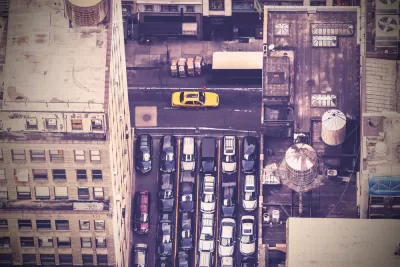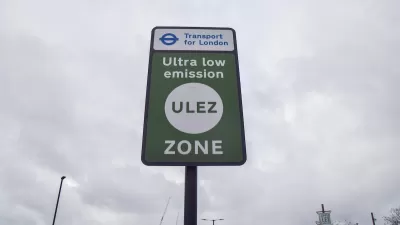Congestion pricing, done right (details matter), mitigates a downside of urban density: traffic congestion. Professor John Rennie Short explores the history of congestion pricing, its application in Singapore and London, and why it's good for NYC.

"For scholars like me who focus on urban issues, serious discussion of congestion pricing in New York City is welcome news," writes John Rennie Short of the School of Public Policy, University of Maryland for The Conversation on Feb. 7.
Properly used, congestion pricing can ease traffic, speed up travel times, reduce pollution and provide funds for public transport and infrastructure investments. The details matter, including the size and timing of charges and the area that they cover.
Short acknowledges the challenges, such as equity, which has New York City Mayor Bill de Blasio opposed to tolling the Harlem and East River briges which could have been a central part of the plan proposed by the Fix NYC panel on Jan. 19.
But the key point is that this approach has succeeded in cities including London, Singapore, and Stockholm.
Short discusses the history of congestion pricing, beginning with economists Arthur Pigou in 1920 and 1996 Nobel Prize winner William Vickery, and urban congestion charging in practice, beginning with the world's first (1975) and most advanced system in Singapore, which introduced variable pricing in 1998, and London's $15.90 charge which began 2003. By contrast, the Fix NYC plan would charge passenger vehicles a daily fee of $11.52 to drive below 60th Street in Manhattan.
Density is good, "(b)ut growing concentration also imposes costs, and one of the largest is traffic congestion," adds Short.
Costs multiply when we factor in use of motor vehicles on public roads. Drivers spend valuable time sitting idly in traffic jams, while noise, accidents and pollution impose heavy burdens on city residents.
Other than the time wasted by motorists themselves while stuck in traffic, those other costs are largely (negative) externalities, as Pigou would say, borne by society, which prompts Short to ask, "Should road use be free?"
Should the answer be any different than to the question, "Should parking be free?".
New York City should move forward with congestion pricing
"Unlike other taxes that can be easily dismissed as imposing costs and killing jobs, congestion pricing improves market efficiencies because it forces people to think about their travel and leads to a more rational use of our public roads," concludes Short. "In my view, it is a powerful policy whose time has definitely come."
Correspondent's note: Read more by Professor Short in Planetizen: "The Historical Foundation of America's Transit Disinvestment," April 7, 2016.
Hat tip to AASHTO Daily Transportation Update.
FULL STORY: Are traffic-clogged US cities ready for congestion pricing?

Study: Maui’s Plan to Convert Vacation Rentals to Long-Term Housing Could Cause Nearly $1 Billion Economic Loss
The plan would reduce visitor accommodation by 25,% resulting in 1,900 jobs lost.

North Texas Transit Leaders Tout Benefits of TOD for Growing Region
At a summit focused on transit-oriented development, policymakers discussed how North Texas’ expanded light rail system can serve as a tool for economic growth.

Why Should We Subsidize Public Transportation?
Many public transit agencies face financial stress due to rising costs, declining fare revenue, and declining subsidies. Transit advocates must provide a strong business case for increasing public transit funding.

How to Make US Trains Faster
Changes to boarding platforms and a switch to electric trains could improve U.S. passenger rail service without the added cost of high-speed rail.

Columbia’s Revitalized ‘Loop’ Is a Hub for Local Entrepreneurs
A focus on small businesses is helping a commercial corridor in Columbia, Missouri thrive.

Invasive Insect Threatens Minnesota’s Ash Forests
The Emerald Ash Borer is a rapidly spreading invasive pest threatening Minnesota’s ash trees, and homeowners are encouraged to plant diverse replacement species, avoid moving ash firewood, and monitor for signs of infestation.
Urban Design for Planners 1: Software Tools
This six-course series explores essential urban design concepts using open source software and equips planners with the tools they need to participate fully in the urban design process.
Planning for Universal Design
Learn the tools for implementing Universal Design in planning regulations.
City of Santa Clarita
Ascent Environmental
Institute for Housing and Urban Development Studies (IHS)
City of Grandview
Harvard GSD Executive Education
Toledo-Lucas County Plan Commissions
Salt Lake City
NYU Wagner Graduate School of Public Service




























